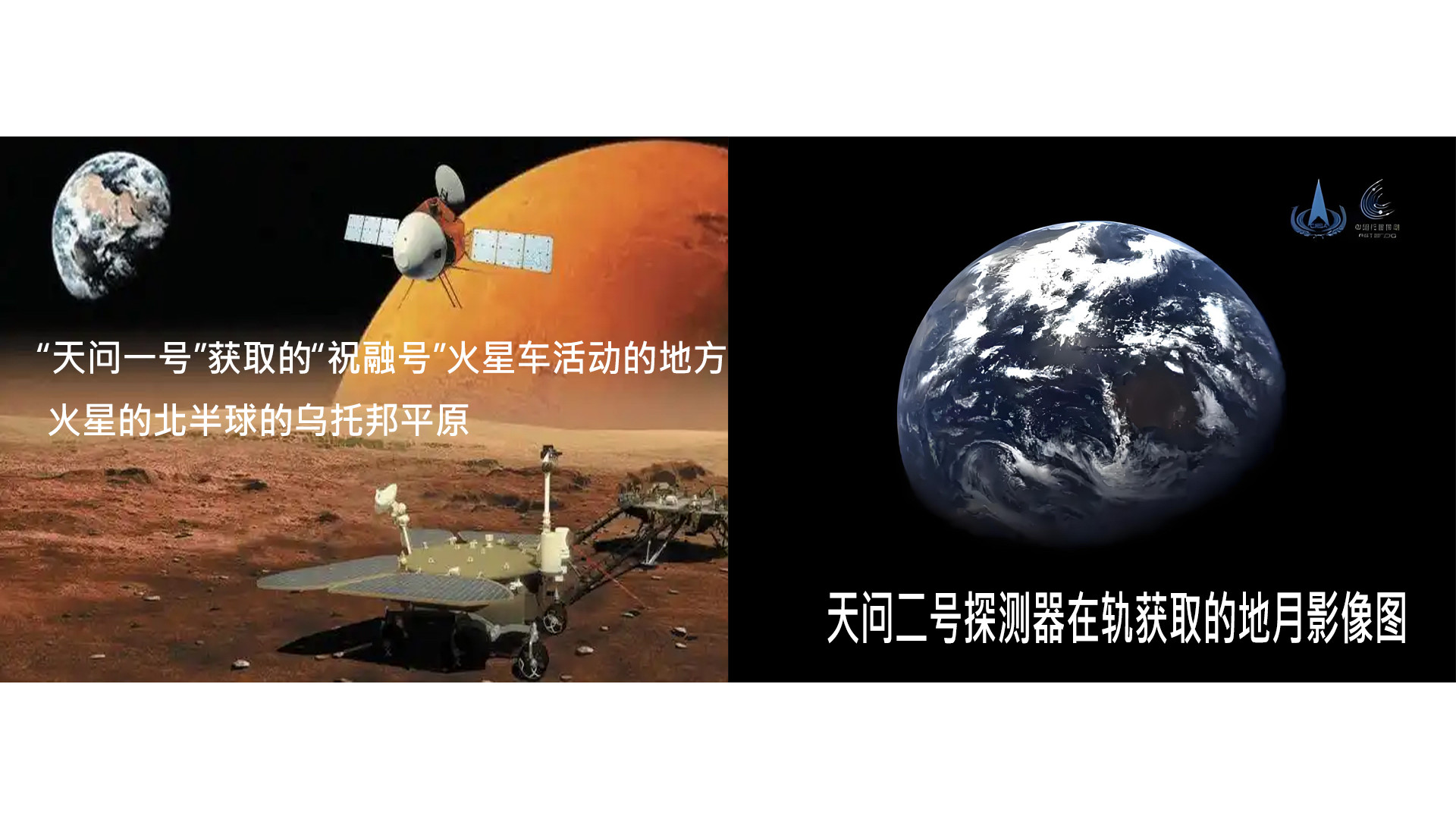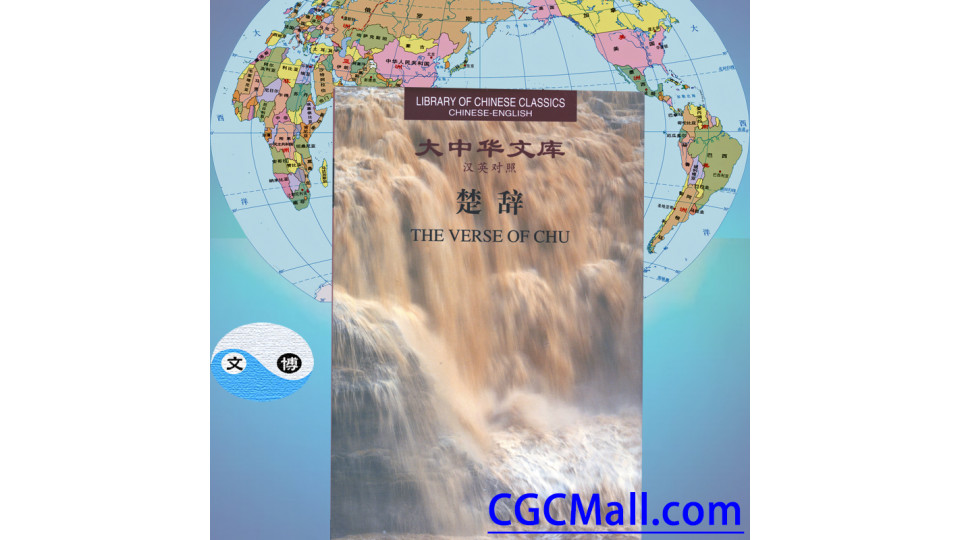Qu Yuan's Tianwen (Heavenly Questions) is a famous poem that explores profound questions about the universe and its origins. It's a 172-line poem filled with inquiries into the nature of gods, creation, and the shape of the world. This work is considered one of the earliest examples of Chinese inquiry into the cosmos, which is also why China's Mars exploration mission was named "Tianwen-1" (Heavenly Questions-1).
Below are the thirty questions on astronomy:
- I ask: Who passed down the tales of the primordial beginning?
- When heaven and earth were yet unformed, how could they be studied?
- In the darkness and chaos, who could fathom its depths?
- When all was formless and vague, how could it be perceived?
- What separates light from darkness?
- How did Yin and Yang merge, and what transforms them?
- The heavens have nine layers—who designed them?
- Whose great labor first shaped them?
- Where is the axis of the sky tied?
- Where does the celestial pole rest?
- The eight pillars hold up the heavens—where do they stand?
- Why is the southeast corner sunken?
- Where do the nine heavens meet?
- How many bends and corners do they have?
- Where does heaven meet the earth?
- How are the twelve zodiac divisions arranged?
- Where are the sun and moon anchored?
- How are the stars arrayed?
- The sun rises from Tang Valley, rests at Meng Si.
- From dawn to dusk, how far does it travel?
- What virtue does the moon possess, that it dies and is reborn?
- What good does it gain, harboring a jade rabbit in its belly?
- Nuqi bore nine sons without a mate—how was this possible?
- Where does Boqiang dwell?
- Where does the gentle wind reside?
- What closes to bring night?
- What opens to bring day?
- Before Jiao (the Horn Star) heralds dawn, Where does the sun god hide?
“祝融号”火星车活动的地方是火星的北半球的乌托邦平原,着陆点在火星北纬的26度附近,大致相当于我国贵阳市、福州市所在的纬度。
China has planned a series of space missions to explore the moon and beyond, including building a permanent, nuclear-powered lunar research base near the south pole of the moon in collaboration with Russia.
Tianwen-2 is the second mission in China’s Tianwen, or “Questions to Heaven”, interplanetary exploration programme focusing on the solar system.
China’s space agency on Tuesday released images of the Earth and moon captured by its asteroid-sampling Tianwen-2 spacecraft after more than a month in orbit.
The images were taken by the Tianwen-2 spacecraft’s narrow field-of-view navigation sensor on May 30, according to the China National Space Administration (CNSA), which released them after image processing on the ground.
The Tianwen-2 spacecraft has been in orbit since it was launched from the Xichang Satellite Launch Centre in southwestern China on May 29.
The probe was orbiting at a distance of more than 12 million kilometres (7.5 million miles) from Earth and was in “good working condition”, CNSA said in a news release on its website on Tuesday.
The first image of the Earth was taken when the spacecraft was 590,000km from the planet, and the image of the moon was taken several hours later at a similar distance from the lunar surface.
These were transmitted back to Earth, where scientists carried out image alignment, radiation correction and colour synthesis to obtain the final full-colour images, CNSA said.
The Tianwen-2, which lifted off via a Long March 3B rocket, is en route to the asteroid 469219 Kamo‘oalewa or 2016 HO3 – a quasi-satellite of Earth that could be a fragment of the moon. It will collect samples from the asteroid’s fast-spinning surface before returning them to Earth in 2027 using a re-entry capsule.
The sample return mission aims to shed light on the formation and evolution of asteroids and the early solar system, state news agency Xinhua said in reporting on the images on Tuesday.
The next mission, Tianwen-3, aims to bring back the first Martian rock samples by 2031, while Tianwen-4 is scheduled to launch around 2030 to explore the Jupiter system and conduct a fly-by of Uranus.
国家航天局 天问二号探测器获取的地月影像图发布
近期,天问二号探测器配置的窄视场导航敏感器,分别对地球和月球成像,显示了良好的功能性能。此次发布的影像图包括器地距离约59万千米时获取的地球影像图和器月距离约59万千米时拍摄的月球影像图,回传地面后,由科研人员经处理制作而成。
今天(7月1日),国家航天局发布了行星探测工程天问二号探测器在轨获取的地月影像图。浩瀚宇宙中有无数的小天体,天问二号为什么要选择小行星2016HO3和主带彗星311P去探测?
天问二号对于探测目标的选择,需要考虑工程的可实施性以及科学价值。据介绍,2016HO3是人类发现的第一颗地球“准卫星”,几乎与地球同步绕太阳公转,具备极高的科学价值,并且前往这颗小行星进行探测相对容易。
探月与航天工程中心副主任、天问二号任务新闻发言人 韩思远:它很有可能蕴含着太阳系诞生之初的一些原始的信息,这对我们研究太阳系早期的一些物质组成,包括它的形成过程以及演化历史等方面具有很好的科学研究价值。
天问二号的另一个探测对象——主带彗星311P是一颗运行在太阳系小行星带的小行星,它同时具备小行星和彗星的一些特性,这类天体的存在打破了天文学家的固有认知,因此研制团队决定造访这颗“小行星带的‘叛逆者’”,探索未解之谜。
The next mission, Tianwen-3, aims to bring back the first Martian rock samples by 2031, while Tianwen-4 is scheduled to launch around 2030 to explore the Jupiter system and conduct a fly-by of Uranus.



